Online Course
NRSG 780 - Health Promotion and Population Health
Module 3: Epidemiology
Analytical Epidemiology
There are three types of epidemiological studies:
- Descriptive epidemiology
- Analytical epidemiology
- Experimental epidemiology
Analytical Epidemiology focuses on understanding the determinants and origins of disease. Three major types of studies are used – cross-sectional, case control and cohort.
Cross-sectional Studies
Examples of cross-sectional studies or surveys include NHANES and BRFSS.
As noted earlier, NHANES provides a detailed portrait of the U.S. population as a whole. These data show the prevalence of HBP in men and women in 2017-2018.
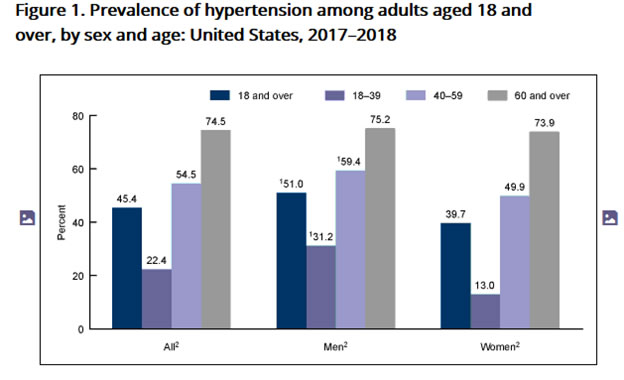
SOURCE: NCHS, National Health and Nutrition Examination Survey, 2017–2018
https://www.cdc.gov/nchs/products/databriefs/db364.htm

Based on the continuing nature of the survey, NHANES data also provides a snapshot of controlled versus uncontrolled high blood pressure during different periods of time.
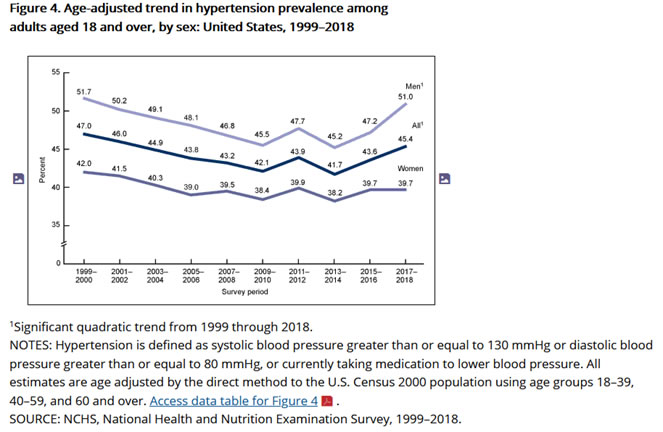
NHANES also gives a profile of serum cholesterol levels in the population.
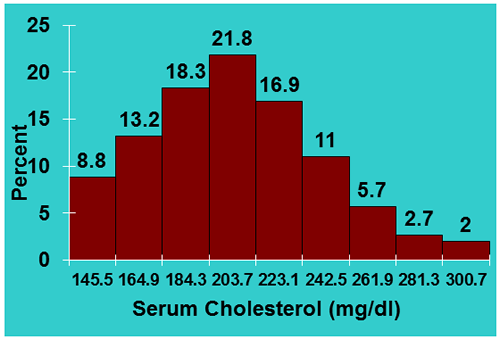
 Behavioral Risk Factor Surveillance System data provide an annual portrait of a number of health behaviors, such as dental visits…
Behavioral Risk Factor Surveillance System data provide an annual portrait of a number of health behaviors, such as dental visits…

…and the increasing prevalence of obesity since 1990.
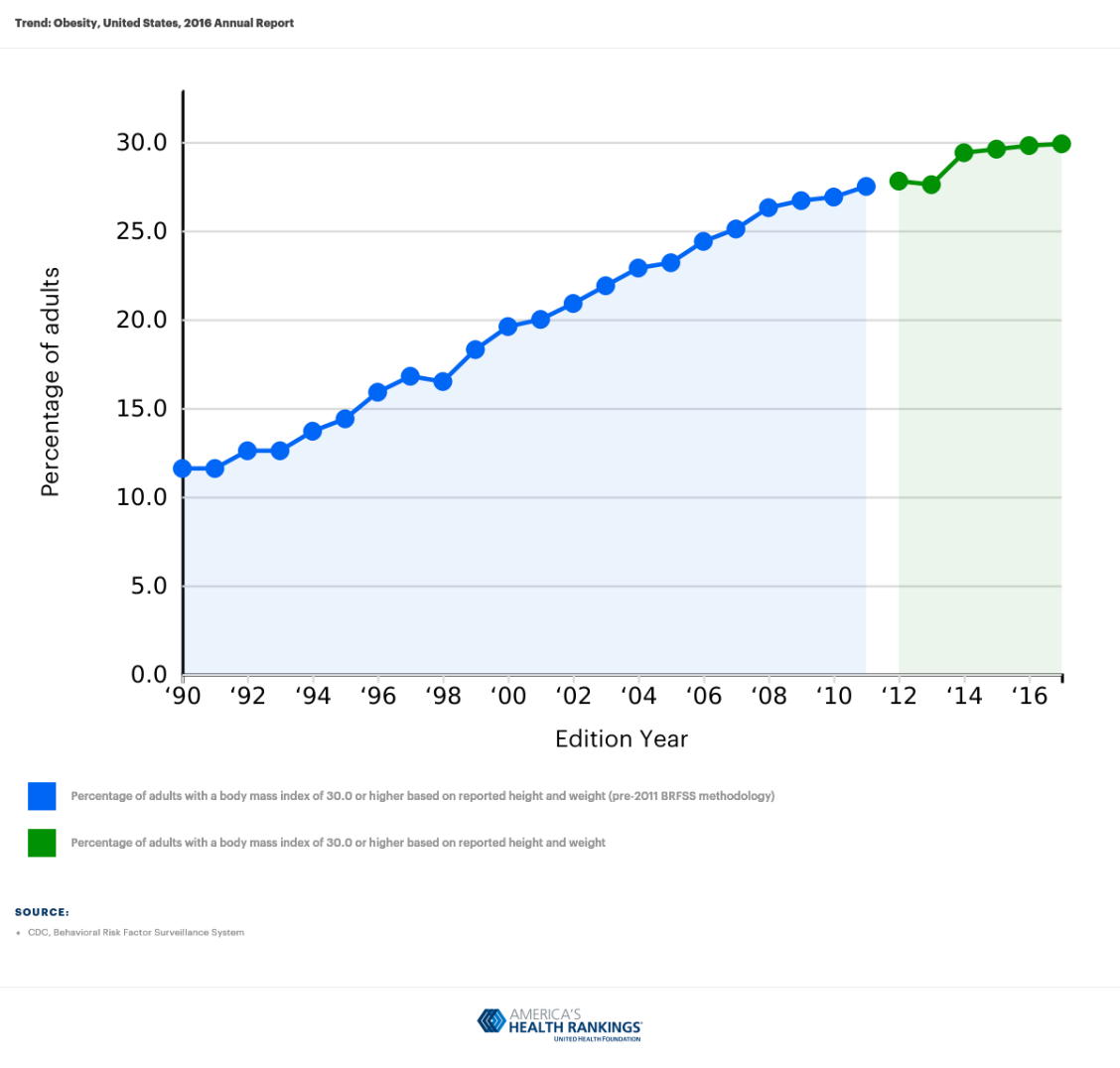
SOURCE: CDC, Behavioral Risk Factor Surveillance System https://www.americashealthrankings.org/api/v1/render/charts/trend/report/2016-annual-report/measure/173/state/ALL/size/1200x600.jpg
Case-control Studies
Case-control studies are studies of populations that are as similar as possible, except one has the disease and the other does not. Among the most widely noted case-control studies were those done in the area of lung cancer.

Ernest Wynder’s landmark case-control studies, as far back as 1950, described tobacco smoking as a possible factor in lung cancer.
- Wynder, E.L. & Graham, E.A. (1950). Tobacco smoking as a possible etiologic factor in bronchiogenic carcinoma: A study of 684 proved cases. Journal of American Medical Association, 143(4), 329-36.
- Wynder, E.L. (1954). Tobacco as a cause of lung cancer with special reference to the infrequency of lung cancer among non-smokers. Pennsylvania Medical Journal, 57, 1073-1083.
Cohort Studies
Cohort studies follow populations for years to determine the effect of various factors. These are much more costly than cross-sectional or case-control studies and require maintaining populations that are willing to continue to participate and be examined.
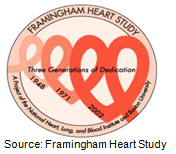
The Framingham Study has followed generations for more than 70 years. As a result of these long term assessments landmark evidence has been obtained beginning in the early 1960s that includes:
| 1960 | Cigarette smoking found to increases risk of heart disease |
| 1961 | Cholesterol, blood pressure and EKG abnormalities found to increase risk of heart disease |
| 1967 | Physical activity found to reduce the risk of heart disease and obesity to increase the risk of heart disease |
| 1970 | High blood pressure found to increase the risk of a stroke |
| 1976 | Menopause found to increase the risk of heart disease |
| 1978 | Psychosocial factors found to affect heart disease |
| 1988 | High levels of HDL cholesterol found to reduce risk of death |
| 1994 | Enlarged left ventricle shown to increase the risk of stroke |
| 1996 | Progression from hypertension to heart failure described |
| 2001 | High-normal blood pressure is associated with and increased risk of cardiovascular disease, emphasizing the need to determine whether lowering high-normal blood pressure can reduce the risk of cardiovascular disease |
| 2002 | Lifetime risk of developing high blood pressure in middle-aged adults is 9 in 10 |
| 2009 | Parental dementia may lead to poor memory in middle-aged adults |
| 2010 | Sleep apnea tied to increased risk of stroke |
| 2010 | Occurrence of stroke by age 65 in parent increased risk of stroke in offspring by 3-fold |
| 2014 | Association between age of adult menarche and adult BMI and select genetic variants reported |
| 2016 | Incidence rate of dementia has declined, especially among participants with a high school diploma |
| 2017 | Game-based intervention that increased social incentives resulted in increased physical activity among participants |
| 2018 | Former smokers who quit smoking 25 or more years ago still have three times as much risk of developing lung cancer as compared to never smokers |
For more information on the Framingham Heart Study follow this link:
https://www.framinghamheartstudy.org/fhs-about/history/
 Another outstanding cohort study is the National Institute of Aging’s Study of Women Across the Nation (SWAN).
Another outstanding cohort study is the National Institute of Aging’s Study of Women Across the Nation (SWAN).
The SWAN study is a multi-site longitudinal study that looks at the effects of aging on women in different ethnic groups. It includes cohorts of Japanese, Chinese, Hispanic, African-American and white women.
This critical study is looking at bone loss, hormonal levels, surgery, pain, menopausal symptoms and many other factors in aging women.
The cohorts and analysis are well mapped out over the period of time of the study.
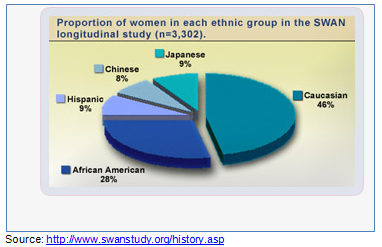
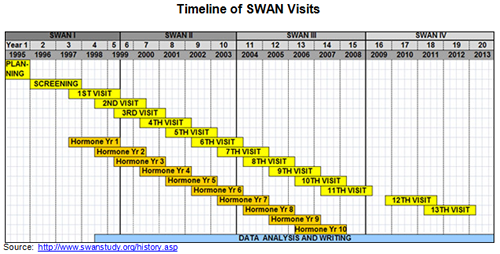
This website is maintained by the University of Maryland School of Nursing (UMSON) Office of Learning Technologies. The UMSON logo and all other contents of this website are the sole property of UMSON and may not be used for any purpose without prior written consent. Links to other websites do not constitute or imply an endorsement of those sites, their content, or their products and services. Please send comments, corrections, and link improvements to nrsonline@umaryland.edu.